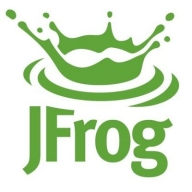

Find out what your peers are saying about GitLab, Google, GitHub and others in Build Automation.
| Product | Market Share (%) |
|---|---|
| Buildkite | 2.2% |
| JFrog Pipeline | 1.8% |
| Other | 96.0% |

| Company Size | Count |
|---|---|
| Small Business | 7 |
| Midsize Enterprise | 1 |
| Large Enterprise | 6 |
Buildkite is a powerful CI/CD tool praised for its scalability and flexibility in automating and managing complex workflows across multiple platforms. Its integration capabilities with various systems and supports for secure, customizable environments enhance development efficiency and data privacy. The feedback highlights significant boosts in productivity and operational cost reduction, making Buildkite a strategic asset for businesses aiming to streamline development tasks and align with organizational goals.
We monitor all Build Automation reviews to prevent fraudulent reviews and keep review quality high. We do not post reviews by company employees or direct competitors. We validate each review for authenticity via cross-reference with LinkedIn, and personal follow-up with the reviewer when necessary.